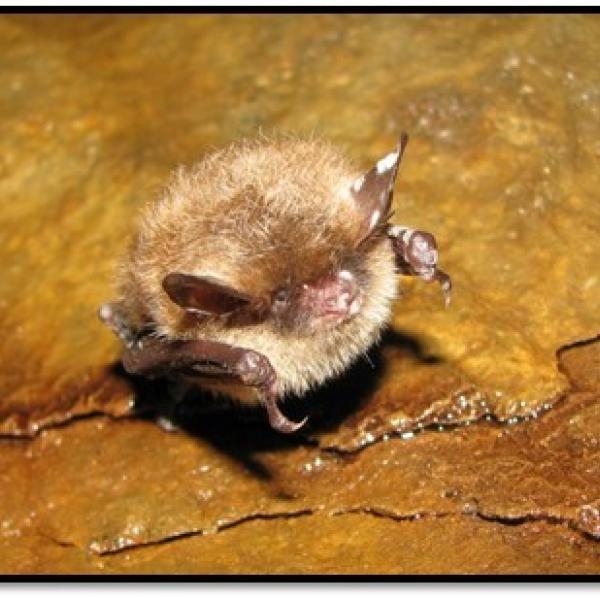
“There is a fungus among us!”
Normally word play is quite fun, but in the case of Pseudogymnoascus destructans, or Pd for short, all fun comes to an end. In fact, Destructans seems a very appropriate name for the invasive fungus that causes White-nose Syndrome (WNS), a disease that has already killed millions of bats across the eastern US and Canada, and continues to spread each year. WNS affects all six of Vermont’s hibernating species. Species like the big brown bat only declined around 35% regionally while others, like the northern long-eared bat, have declined more than 90% and continue to succumb to the disease each winter.
Over the past few years, researchers have discovered the suspected origins of this fungal invasion in many European countries, and now as far east as China, yet with none of the associated mortality to the native bat species. Phylogenetic evidence from Europe and Asia suggests that the fungus has existed there for a very long time, but that the North American fungal specimens are newly introduced (Hoyt et al. 2016). This, combined with field evidence of a point introduction in NY state around 2006, fungal spread patterns, and additional laboratory research, supports the theory that Pd is indeed an invasive species.
Breaking News: This March the fungal disease was confirmed on a little brown bat in Washington State. This represents a substantial range-jump of nearly 1,300 miles from the previous, westernmost detection of the fungus and is the first evidence that the disease has crossed the Rockies.
Why is this significant? WNS and Pd have continued to spread north, south, and west to new counties and states each winter and the disease is now in 28 states and 5 Canadian provinces. However, this location out in Washington State could become a new western epicenter in a part of the country where biologists were hoping to have more time to gather important baseline data on current bat populations. In addition, unaffected areas, such as the western US and Canada, are the best sites for promising treatments, which may still take years to develop before they are ready to be released into the field. Finally, although the west shares some of our eastern WNS-affected species (e.g., the little brown bat and the big brown bat), there are many other western species that have not yet been exposed to the disease and are now vulnerable.
The glimmers of hope are:
• Vermont’s little brown bat and Indiana bat remnant populations appear to have stabilized.
• Vermonters are largely aware of WNS and are actively aiding our conservation and recovery efforts.
• Range-wide genetic analysis of little brown bat populations suggest that the disease may not spread as quickly among western colonies of this species (Vonhof et al. 2015).
Unfortunately, northern long-eared bats continue to show a disproportionate rate of mortality from the disease and their fate in Vermont is yet unknown.
How can you help? The Vermont Fish and Wildlife Department relies on citizen scientists to report and help monitor surviving colonies of bats. If you know of a large number of bats living in a building, bridge, or bat house please report online at https://anrweb.vt.gov/FWD/FW/BatColonyReporting.aspx. If you would like to help monitor a colony you can learn how here.
For more information email Alyssa Bennett or call 802-786-0098.
References:
Hoyt, J.R., K.E. Langwig, K. Sun, G. Lu, K. Parise, T. Jiang, W. Frick, J.T. Foster, J. Feng, A.M. Kilpatrick. 2016. Host persistence or extinction from emerging infectious diseases: insights from endemic and invading regions. Proceedings Royal Society B. 283: 20152861.
Vonhof, M. J., A.L. Russell, C. Miller-Butterworth. 2015. Range-Wide Genetic Analysis of Little Brown Bat (Myotis lucifugus) Populations: Estimating the Risk of Spread of White-Nose Syndrome. PlosOne 10(7): e0128713.
Photo Credit: Vermont Fish and Wildlife Department
Article by Alyssa Bennett, Vermont Fish and Wildlife Department